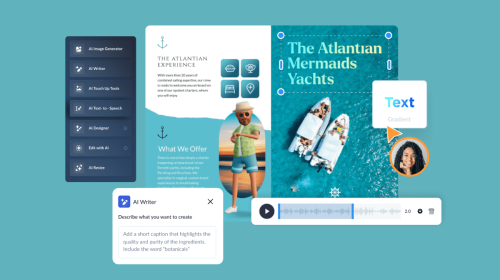
AI for Business: Best Methods, Examples & Tools to Use


AI in business isn’t exactly a new concept.
Many companies have been using artificial intelligence and machine learning for years. But the rapid expansion of Generative AI in 2024 is why the AI business is seeing a huge boom.
As Randy Bean, AI and data leadership expert, remarked about his latest research on AI adoption, “This year’s survey findings suggest that we are experiencing a once-in-a-generation transformational moment, akin to the founding of the internet in the 1990s.”
As further evidence, an industry report published by Zscaler revealed that the use of artificial intelligence/machine learning tools in enterprise businesses skyrocketed by nearly 600%, from April 2023 to January 2024.
Whether you’re a small business using AI for marketing, a medium business using AI for business plan development, or an enterprise using it for financial management, incorporating AI into your business is essential, more than ever.
In this article, we’ll discuss AI for business and look at the best methods to incorporate it into your processes. Plus, we share some examples to give you an idea of the possibilities and AI tools for business that you can try out today.
If you're short on time, check out this video to learn how to use AI for your business and marketing.
*Disclaimer: The comparisons and competitor ratings presented in this article are based on features available as of January 17, 2025. We conduct thorough research and draw on both first-hand experience and reputable sources to provide reliable insights. However, as tools and technologies evolve, we recommend readers verify details and consider additional research to ensure the information meets their specific needs.
AI in business is the use of artificial intelligence and machine learning to optimize processes and improve systems in business settings.
Since there are different types of businesses, there are also different types of AI tools for business, all with diverse uses and functionalities.
As the use of AI expands into all business areas, researchers are learning that some tasks are best for AI to do alone, others best for humans without AI and some are great for work in unison.
So, a big part of AI in business is knowing when to use it and when not. The best AI for business is the one that helps make things easier, not overcomplicate processes and systems.
A study conducted by researchers at MIT's Center for Collective Intelligence (CCI), concluded that AI on its own is best suited for tasks such as background research, pattern recognition, predictions, and data analysis. Humans on their own aren’t as good or as fast as AI can be with these tasks.
The report also explains that the best type of work for humans and AI to do together is creative work, because, “Creative tasks require a mix of creativity, knowledge, and insight, which are qualities that are inherently human and difficult for AI to fully replicate. Yet those tasks also require repetitive, routine processes where AI is highly effective.”
All in all, using AI for business is quite practical, seeing as to how it can automate repetitive tasks, generate information based on machine learning algorithms, process vast amounts of data to extract meaningful insights and predict future outcomes based on data analysis.
Using AI for your business offers many benefits. Most importantly, it can save time and money that could be better allocated to tasks AI cannot do, like personalized communication and complex problem-solving that need empathy and a human touch.
According to HubSpot's State of AI 2024, AI already saves the average employee 2.5 hours per day.
Here are some of the beneficial ways in which AI saves you money and time:
Made with Visme Infographic Maker
No business tool is free of setbacks—AI included. So, for all the benefits AI can offer your business, it’s good to know where it can fall short. The reason: relying on AI outputs without fact-checking or proper data insertion, can be a dangerous game for your business.
Let’s look at the most impactful challenges that AI brings.
There are more AI business tools than I could ever list in one article. So, I selected five of the most helpful ones that can support your business in positive ways. But if you want to dive into a more extensive list, check out this video below:
When OpenAI launched GPT in November of 2022, it grew to 100 million users in only two months, making it the fastest-growing consumer application in history. Since then, it has been used to develop countless other tools using the OpenAI data.
In essence, ChatGPT is an AI chatbot that can help businesses in many ways; from generating content for a marketing project to creating Excel formulas for financial analysis and management.
But beyond the ChatGPT chatbot, there are also custom GPTs that anyone can make to help with specific business tasks and processes.
A custom GPT is a specialized version of ChatGPT that's configured for specific tasks, industries, or use cases. Think of it as a customized AI assistant that's been given specific instructions, knowledge, and capabilities to handle particular types of work. You can create your own custom GPT with OpenAI's GPT builder.
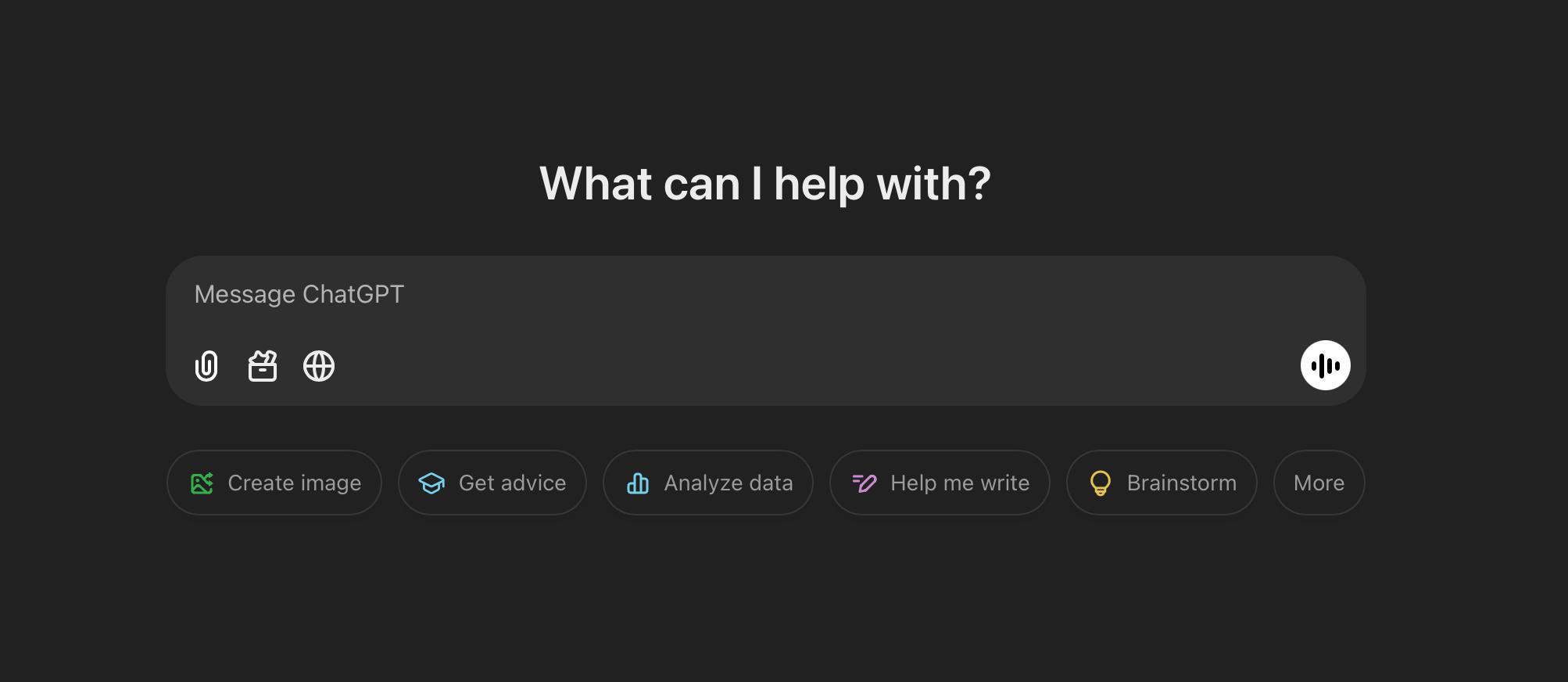
Inside Visme’s all-in-one content authoring and brand management platform is a full suite of AI tools called Visme AI. Under this umbrella are several AI-powered features to help you grow and maintain your business success through branded visual content.
First up is the Brand Wizard, an AI-powered branding assistant that pulls brand assets from your website and creates a full set of branded templates. It also outputs a comprehensive brand kit to use on any project with Visme.

Then, the AI Writer can generate copy for any of your visual projects. Use this tool to create titles, catchphrases or summarize longer content. You can also use it to tone-switch any text to sound more or less professional or friendly.
For images, you have a set of AI Edit Tools that help you edit, touch up, unblur or upscale any photo. You can also remove backgrounds to create cutouts or erase objects.

And finally, there’s Visme's AI Designer, which generates first drafts of 20+ content types, from social media graphics to lead magnets.
Write a text prompt, select the design theme that fits your need and let AI do the rest. Once your draft is ready, you can further customize every detail, including colors, text, assets and images to fit your brand and content needs.
Asana is a popular work management and collaboration platform designed to help teams organize, track, and manage their work. It helps teams plan projects, assign tasks, set deadlines, and monitor progress in a user-friendly way.
Asana AI, the AI-powered assistant inside Asana can take care of several things. For instance, it can automatically assign tasks based on predefined rules or past patterns. It can also suggest task owners, due dates, and project priorities based on team activity and historical data.
With Asana AI, you can also set goals for your team and ask for regular progress updates that highlight successes, bottlenecks and milestones at risk. It can then create new tasks to help achieve the goals you set to begin with.
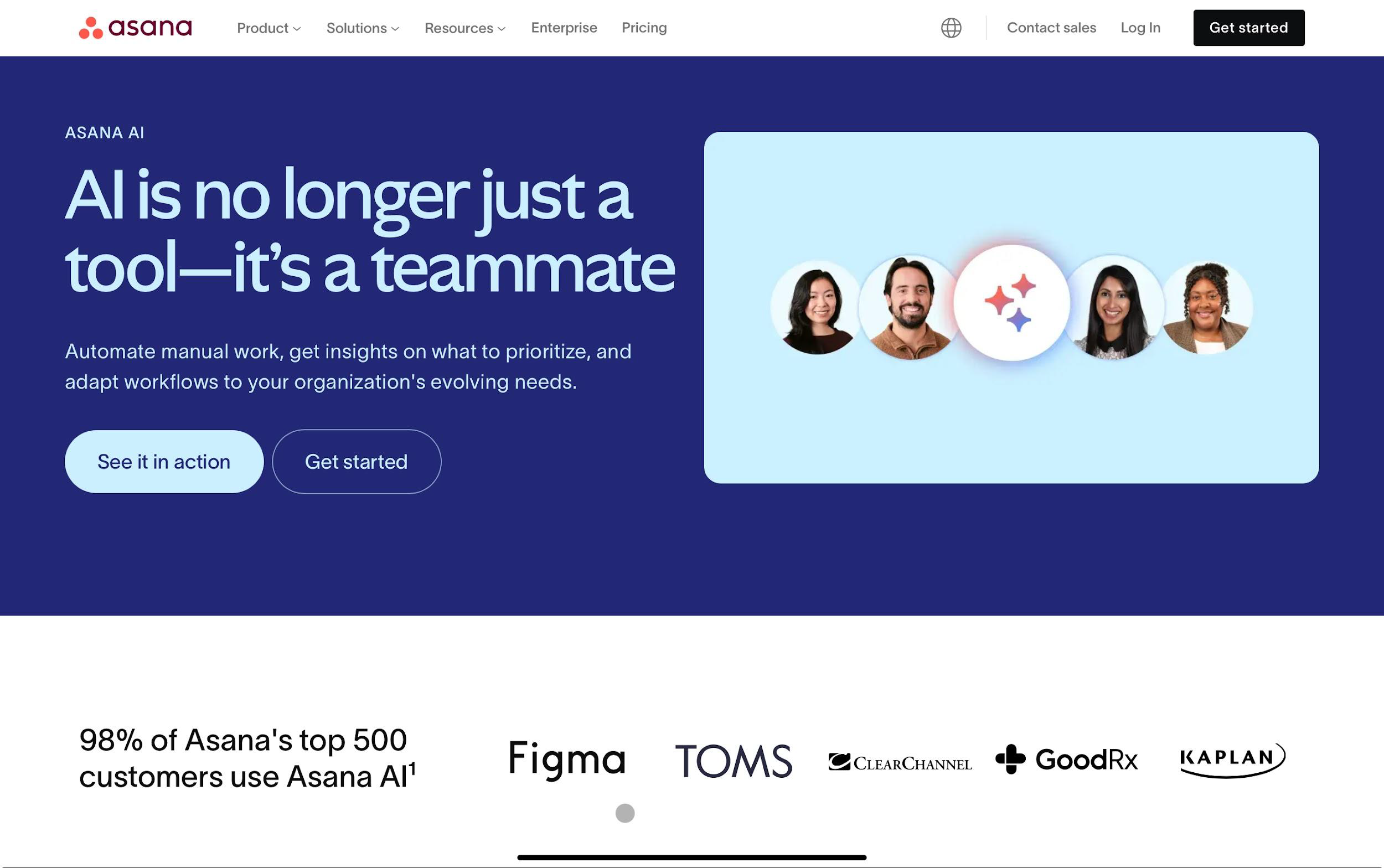
Grammarly is an AI-powered writing assistant that goes beyond basic spell-checking to help businesses maintain professional communication standards. It analyzes tone, clarity, and engagement while suggesting improvements for more effective business writing. The enterprise version includes additional features like style guides and brand tones, ensuring consistent communication across entire organizations.
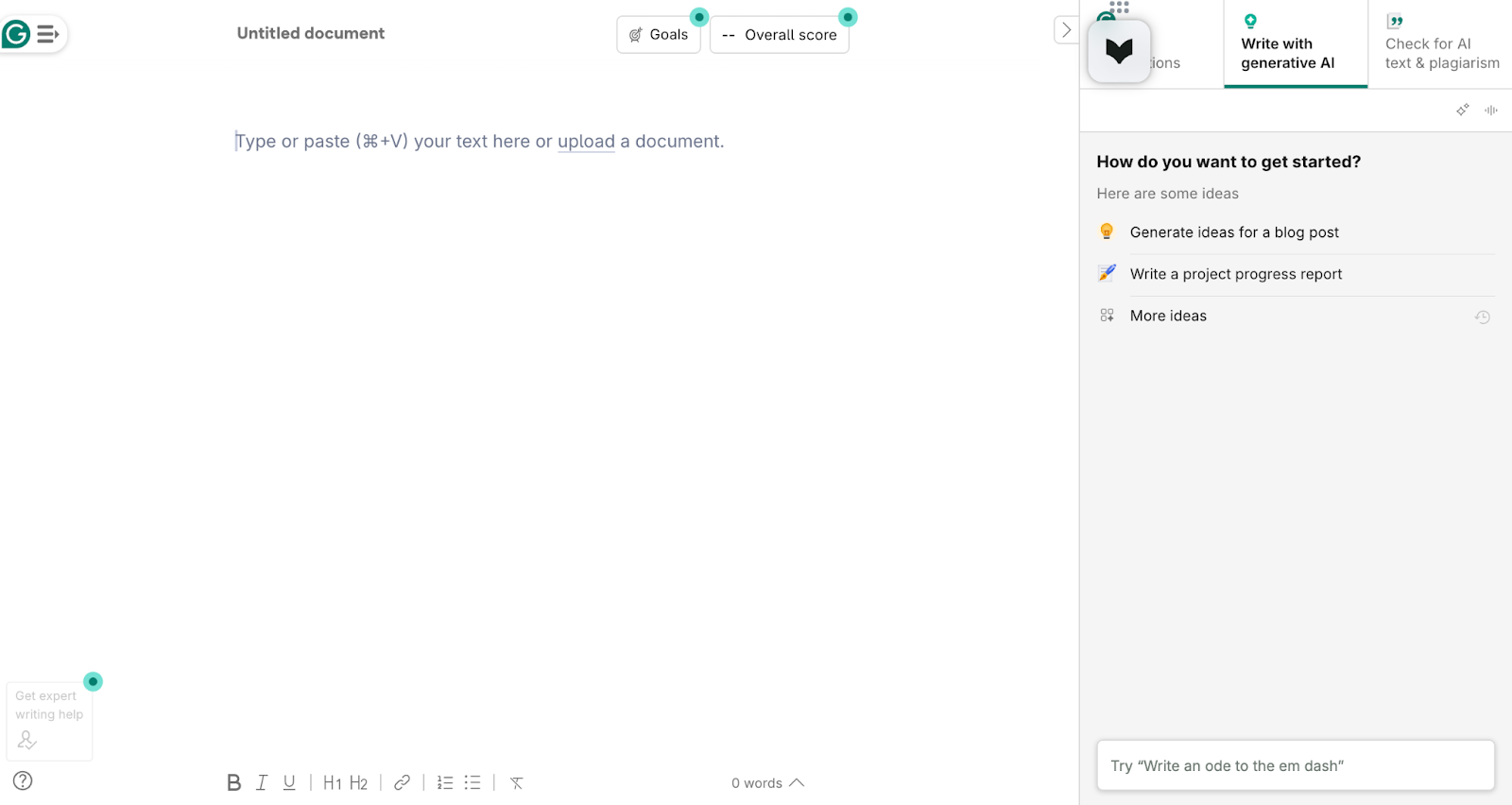
This tool is practical for many business industries and use cases. It can spell-check long texts or even instant messages. As a phone app, it can help optimize social media captions and emails. In Google Docs, it proofreads as you write, saving you time from having to edit later.
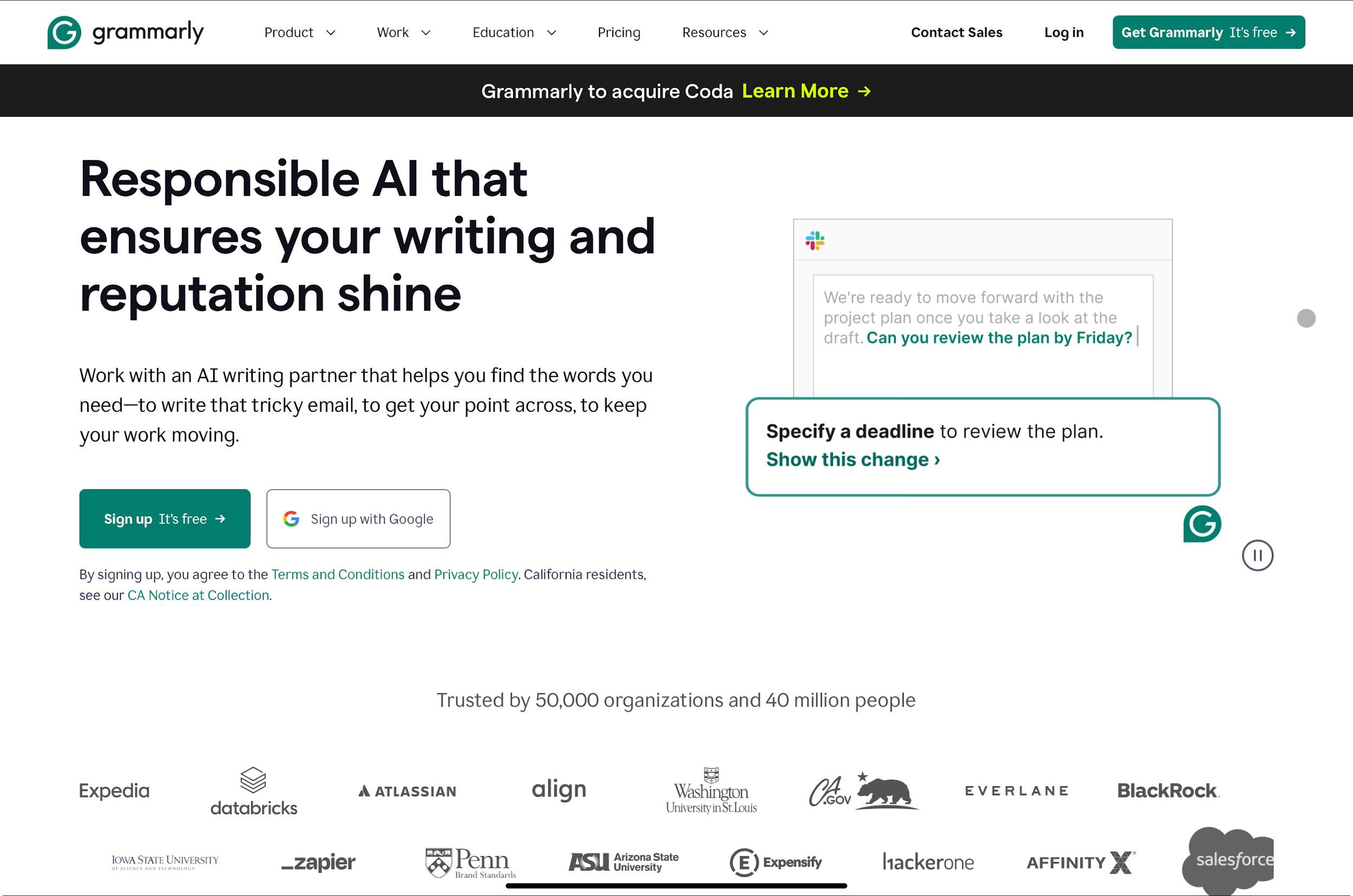
Intercom is an AI-backed customer support chatbot that businesses can easily integrate into their systems. This helps customer service reps save time by answering recurring questions using company knowledge.
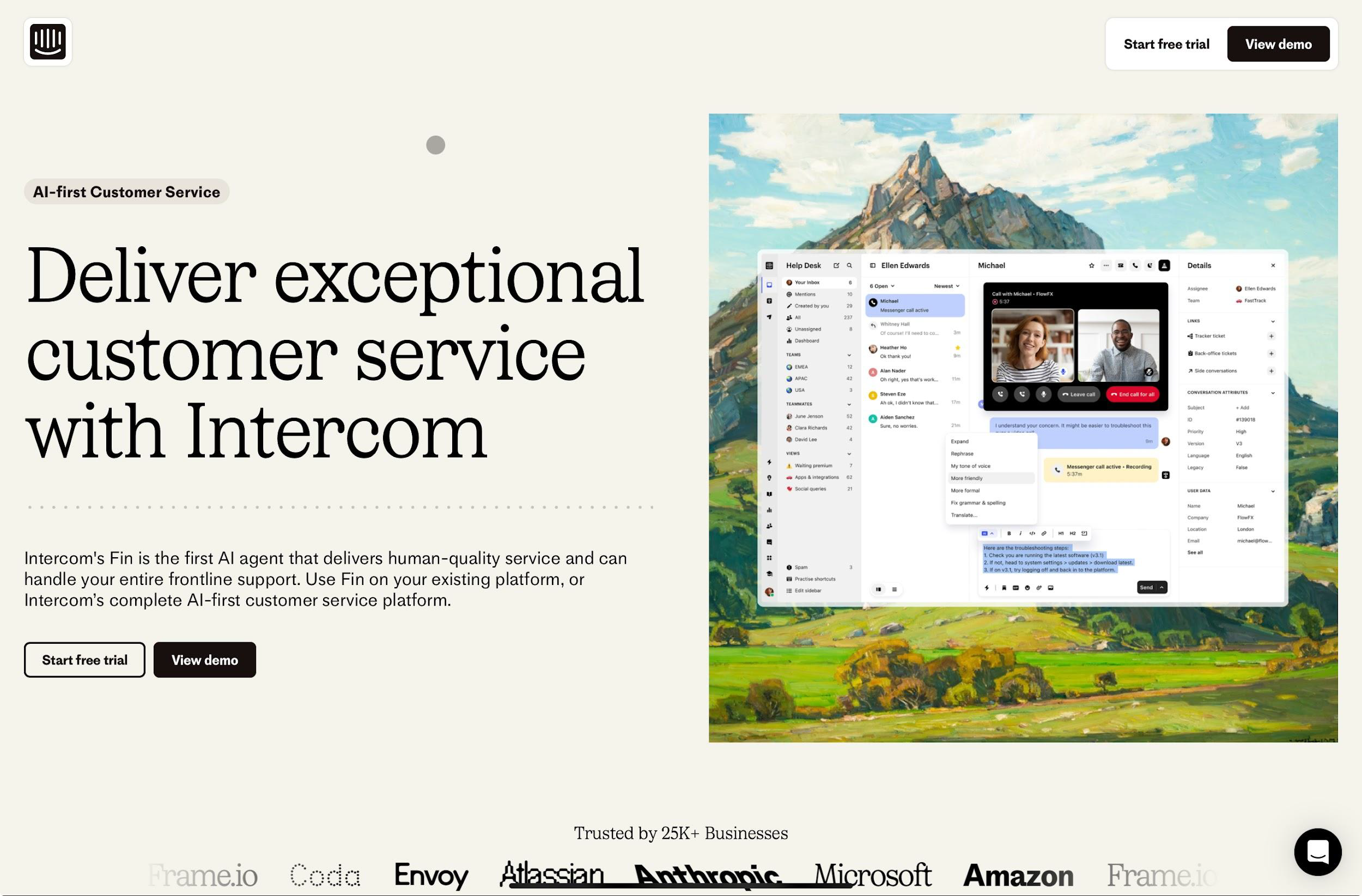
To get started, you connect your company’s knowledge base to the chatbot’s settings. The chatbot will use this information to have conversations with your customers about the things they want to know. For instance, if a client asks a question about how to set up your product, the chatbot can either explain how to do it or direct them to the article in your knowledge base.
This tool is practical for both the sales team and customer service team. With one chatbot you can direct the conversation to both departments, according to what the person needs or is looking for.
Vcita is an all-in-one business management platform for service-based SMBs, bringing CRM, scheduling, payments, and client communication together to help teams win back time and grow revenue.

vcita’s BizAI is an agentic AI assistant built right into your daily workflow, designed to take real work off your plate without taking control away from you. It lives inside the tools you already use, so getting value feels effortless and immediate.
From drafting smart, context-aware replies based on recent client conversations to recommending the best next step on every account, BizAI turns everyday admin into quick wins.
It auto-fills CRM fields from chats and calls, proposes the right CTAs, and helps compose estimates, messages, and follow-ups so you can move faster with fewer tabs and less copy-paste.
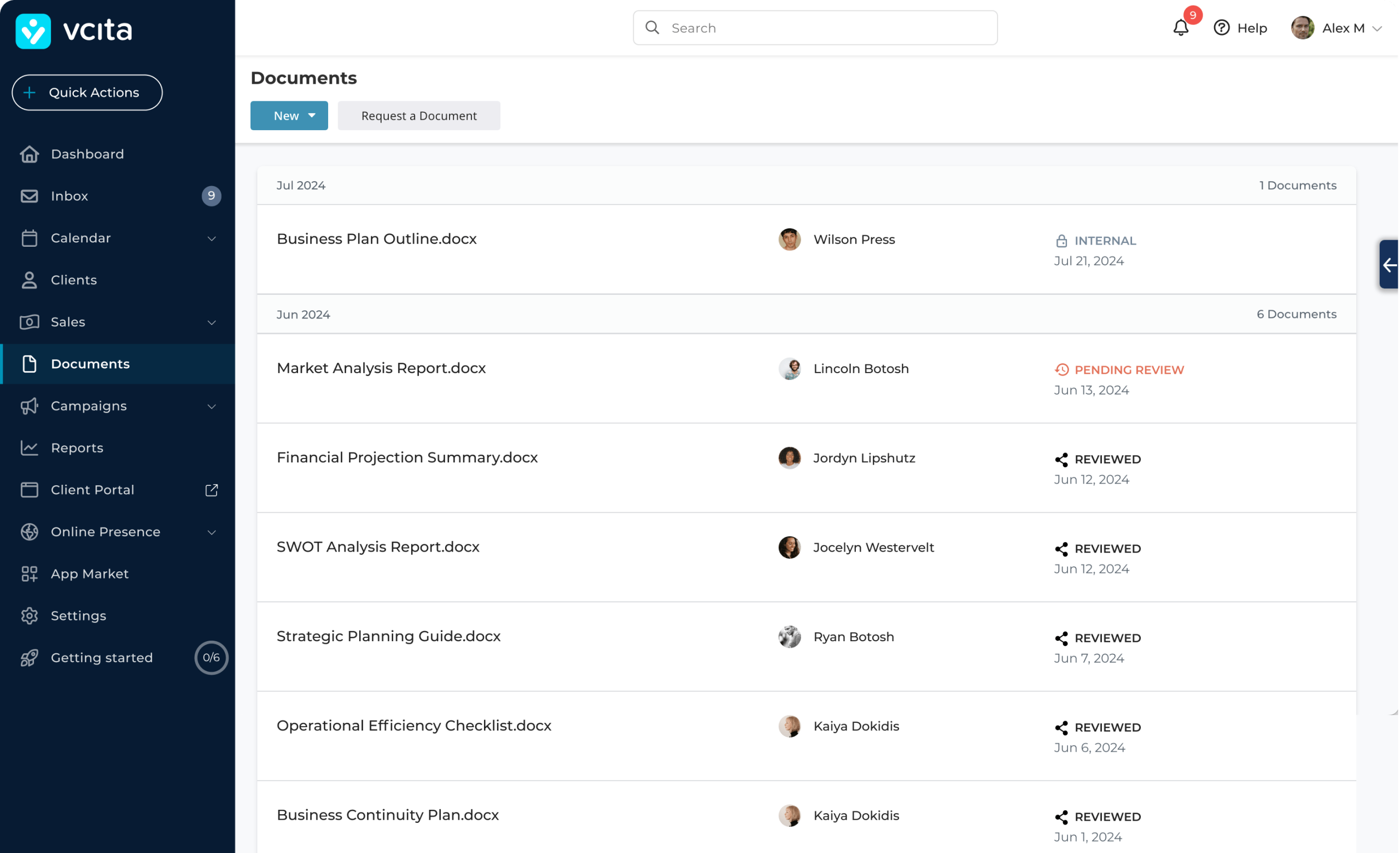
Because it’s embedded in vcita’s scheduling, payments, and client data, BizAI surfaces insights that are instantly actionable, not theoretical.
For service businesses, it can craft polished, on-brand service descriptions and connect the dots to booking and payment, keeping revenue flowing while you stay in the driver’s seat. In short, it’s the must-have AI co-pilot for modern SMBs.
DashThis is an AI-powered analytics and reporting platform that helps businesses and agencies make smarter, faster marketing decisions.
It goes beyond traditional reporting tools by turning raw marketing data into real-time visual dashboards powered by artificial intelligence.

DashThis automatically pulls performance data from multiple sources; including Google Analytics, Facebook Ads, LinkedIn, and HubSpot; and translates it into clear, actionable insights.
The platform’s AI-driven dashboards detect trends, highlight underperforming campaigns, and suggest optimization opportunities, helping teams focus on strategy rather than manual data analysis.
There are countless ways AI can be used in business, from creating content to analyzing x-rays. In case you didn’t know, in 2024, AI was mostly used for customer support.
To give you a good idea of the possibilities beyond customer support, I’ve compiled a list of common business industries and collected examples of AI uses for each. You can scroll through or skip to the section that relates to you the most:
Designers and non-designers alike, can save a lot of time by incorporating AI into their creative process. For instance, professional Adobe products geared towards designers offer several AI-powered creative tools like Adobe Illustrator’s generative fill, which completes a design from a sketch and text prompt.
Other uses for AI in design include generating images, backgrounds or complete scenes to use in visual projects of any kind. For businesses, Visme AI offers several AI solutions to help with content design. Visme AI Designer, for example, generates customizable documents, presentations and social media graphics from text prompts or uploaded content.
Another tool from Visme AI, Visme’s AI Image generator, is an excellent companion for design projects. Just from a text prompt, it can output visuals in many different styles. To get better results, you just need to improve the prompt until you get what you need.
Other uses for AI in design include:
AI has had a huge impact on marketing teams in areas like content, social media, lead generation and more.
A current research report from Sprinklr, revealed that 63% of B2B marketers in the United States saw improvements in revenue and lead generation from AI in 2023. The study also found that 75% of marketing professionals plan to implement AI solutions to enhance their customers' social media experiences.
There’s so much that AI can do for marketing, like generating copy and visuals for social media campaigns or text for landing pages and emails. Tools like Copy.ai and Jasper are excellent examples. They help create written content for marketing strategies of diverse kinds.

Lead generation is another marketing field that’s greatly enhanced by AI. Using generative AI tools, marketers can easily create lead magnets with valuable content, prepare client profiles backed by data and conduct lead scoring analysis.
Some marketers take online AI courses to learn how to apply these tools effectively in their strategies.
AI also makes an impact with advanced social listening and analytics in social media marketing thanks to tools like Talkwalker by Hootsuite. With this AI tool, you can monitor conversations that mention your brand in many different ways. It can analyze social media posts, images that include your logo, podcast audio and other types of online conversations like Reddit.
In this guide, we’ve reviewed the top 16 AI Marketing Tools to Use in 2025.
Other uses for AI in marketing include:
AI applications in healthcare have helped optimize patient care and medical procedures. For example, Viz.ai uses AI to analyze CT scans and quickly identify potential strokes, helping doctors make faster treatment decisions through automated image analysis and rapid notification systems.
Medical imaging analysis tools powered by AI help radiologists detect abnormalities in X-rays, MRIs, and other scans with greater accuracy.
Companies like Butterfly Network use AI to make ultrasound technology more accessible and accurate through portable devices.
Aside from analyzing CT scans and improving ultrasound technology, AI in healthcare can also help in these ways:
One of the biggest AI advancements in sales is the introduction of AI chatbots that initiate conversations with potential clients on websites or social media profiles.
These chatbots not only initiate conversations but also qualify leads, schedule meetings, and provide tailored product recommendations.
Many teams now pair these tools with AI SDR systems that automate early sales tasks like prospect research and first-touch personalization, passing only high-intent leads to human reps.
Intercom was one of the first AI-backed chatbot services that offered a chat window that could be added to a web page. Nowadays, there are many more options besides Intercom, but all function similarly.
As someone arrives on a landing, product or sales page, the chatbot greets them and offers options like information about the product or service, support for existing clients and occasionally a search bar to look for specific answers in the company’s knowledge base.

These chatbots, which are also available for social media profiles, help sales teams close new deals and customer service teams support existing clients with their queries. Intercom’s Customer Service Trends Reports, 45% of support teams are already using AI to help their clients.
Other uses for AI in sales include:
AI optimizes financial services by automating complex processes and enhancing decision-making. For instance, ContractSafe uses AI to review commercial loan agreements, completing work that previously took hours, in just seconds. This not only saves time but also reduces human error in document review.
Companies like Tookitaki use AI to detect fraudulent transactions, protecting both businesses and customers. Their AI systems analyze thousands of data points per second to identify suspicious patterns and prevent financial crimes.
Beyond fraud detection, AI-powered advisors like Betterment provide automated investment management services to clients at a fraction of traditional costs, making wealth management more accessible to average investors.
Other uses for AI in financial services include:
Using AI for training and development covers a wide spectrum of possibilities. From generating content for lessons to creating complete lesson plans and progress reports for students as they learn. Use tools like Quizizz to create quizzes and tests from your existing content.
AI tools like Synthesia can help you turn text into videos or Restream to turn a video into a transcript. Likewise, AI lets you turn text into an audio narration to place over presentation slides.
Similarly, with Visme AI, you can generate complete presentations or manuals using your content and then you just need to customize it to match your style guidelines.

Some other ways you can use AI for training and development include:
We’ve looked at a lot of ways you can use AI in business, but you might still have some questions. These FAQs will help.
There are countless ways that AI can be used in business. For example, AI can:
AI transforms business intelligence by analyzing complex data patterns and providing actionable insights. It can:
AI can analyze large amounts of data to help decision-makers arrive at the best solutions for their business.
For example, it can process historical data, market conditions and external factors to provide evidence-based recommendations for pricing, inventory management, resource allocation, and strategic planning.
AI can also simulate different scenarios to predict outcomes, assess risks and identify optimal strategies.
There are many ways AI can be used in the workplace. For example, AI can:
AI enhances business strategy by providing deep market analysis, competitive intelligence and predictive modeling capabilities. It can also:
AI has become an essential part of doing business across every industry. From automating routine tasks to providing deep analytical insights, AI tools help businesses of all sizes work more efficiently and make better decisions.
The key to successfully implementing AI in your business lies in choosing the right tools for your specific needs and understanding their limitations.
Whether you're using AI for design, marketing, healthcare, sales, financial services, or training, the goal should be to enhance human capabilities rather than replace them entirely.
Start small by implementing AI in one area of your business, measure the results, and gradually expand its use where it makes the most sense. Remember that AI is a powerful tool, but it works best when combined with human creativity, judgment, and expertise.
Ready to explore how AI can optimize your business?
Get started with Visme AI and discover how our suite of AI-powered tools can help streamline your content creation process while maintaining your brand's unique voice and style.
Plus, take advantage of all our other business features like dynamic fields, branded templates, interactive hotspots and much more.
Supercharge your content creation and designs in minutes with the power of the AI Designer.
Try for Free